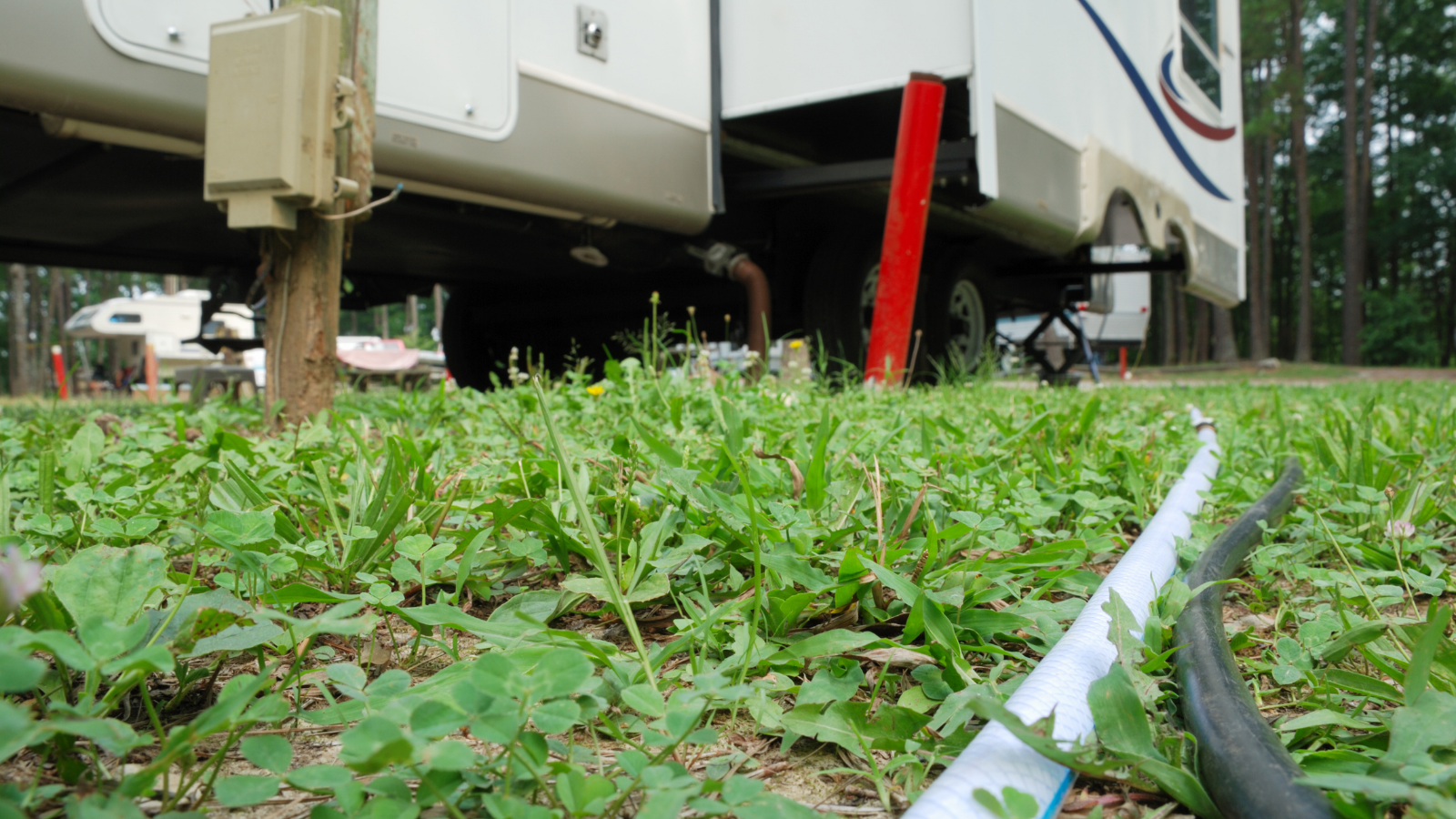One of the conveniences of traveling via RV is the ability to access running water for drinking, washing, potty breaks, and bathing. Every time you camp somewhere, unless you’re boondocking, you’re hooking up to a water source. These sources vary by location – it could be city water or well water.
Regardless of where or how often you camp, you need to keep your fresh water supply clean. Here’s how to you do it.
The Basics
RVs typically have two sources of fresh water: shore water, meaning you have a hose hooked to a fresh water source, and a fresh water tank, which holds only gallons of water you can use for drinking and cleaning without hooking up to a water source directly. You can fill you fresh water tank from a city or well connection at most campgrounds.
In addition to the fresh water tank, you have a gray water tank that is semi-dirty water that has come down the drain, and the black water (septic) tank, which holds waste.
To utilize fresh water, you need to turn on two switches: the water pump and, if you have a full bathroom, the water heater.
What You Need
If you’ll be using shore water, you’ll need a white non-toxic drinking hose. Hoses not labeled safe for drinking can contribute to lead and other chemicals getting into your water. Only use the hose for hooking up to a water source. Use a garden hose for any other uses, such as flushing out holding tanks or giving your RV a good scrubbing. For storage or when otherwise not in use, connect the two ends together to prevent debris from getting into the hose. Always run water through the hose prior to connecting it to the RV at the campground.
You should also filter the water going into the RV with a filtration system. Though not purifying water, filters do remove bacteria, lead, and other contaminants. There are various filters on the market that utilize different methods and technologies. To filter water coming into the RV, you can either install an inline filter directly in the water line for drinking water or for all the water going into the RV.
Cleanliness Tips
Make sure that fresh water holding tank caps are securely tightened, in order to prevent bugs and contaminants from getting into the tank. It’s also important to drain or dump your fresh water holding tank after a camping trip, especially if you go camping only once a summer, or even a few times. Stagnant water and hot summer temperatures are not a good combination and can lead to bacteria or algae growth. Refill the tank once you arrive at the new campground.
You also need to keep your fresh water system sanitized. This job should be conducted every spring after the RV comes out of storage, or if you notice water that has an odor or is stale. It’s honestly not a bad idea to go through this process prior to putting your RV into storage or any time the RV has been sitting idle for an extended period of time.
First, you need to get most of the water out of the system. Start with draining the water heater – not when it’s hot or under pressure. Then locate the low points of the hot and cold water lines, open, and let the water drain out. Drain the fresh water holding tank. During draining, you can use the water pump for a moment or two to force as much water out as possible. Now close all the drains.
Then you’ll want to sanitize the system. According to Mark Polk, owner of RV Education 101, “Take a quarter cup of household bleach for every 15 gallons of water that your fresh water tank holds. Mix the bleach with water into a one-gallon container and pour it into the fresh water holding tank. Fill the tank almost completely full. Turn the water pump on, open all hot and cold faucets, and run the water until you smell the bleach at each faucet. Close the faucets.” Move or drive the RV to get that mixture sloshing around the entire tank. Let this solution sit for at least 12 hours, then drain the system again and refill the fresh water holding tank with potable water. “Open all of the faucets and run the water until you no longer smell any bleach,” says Polk.

